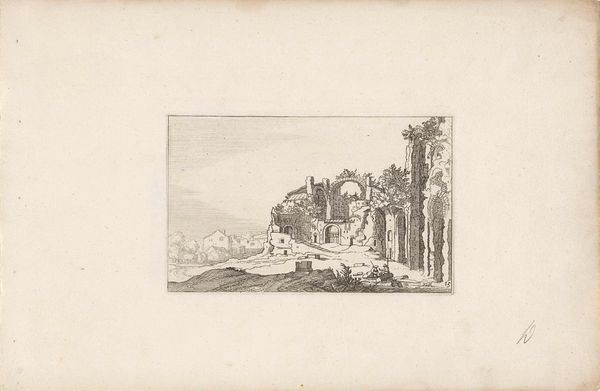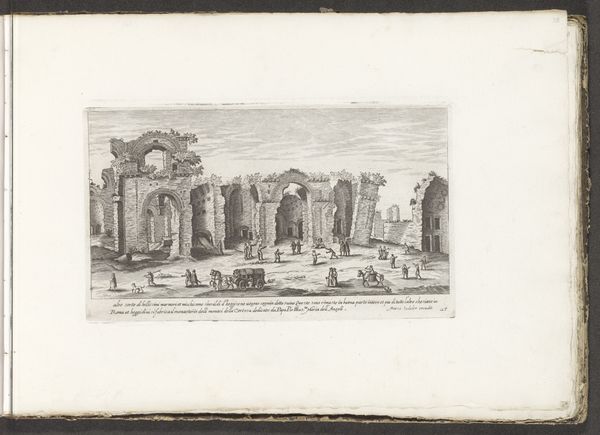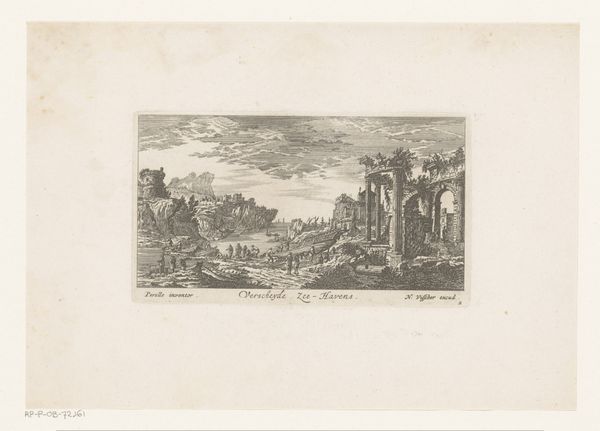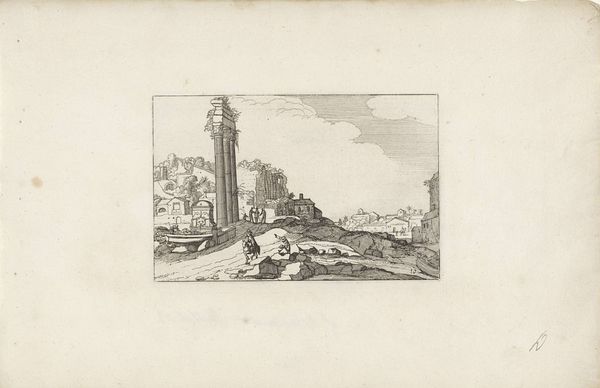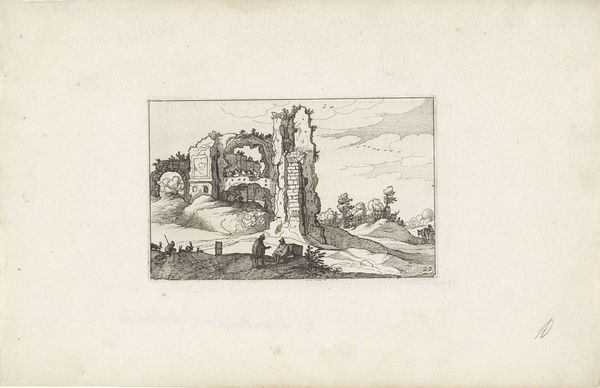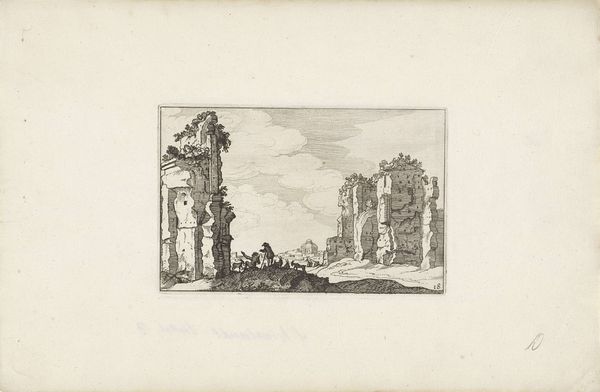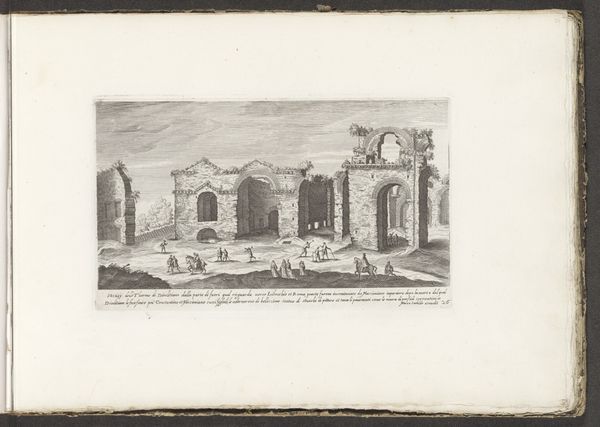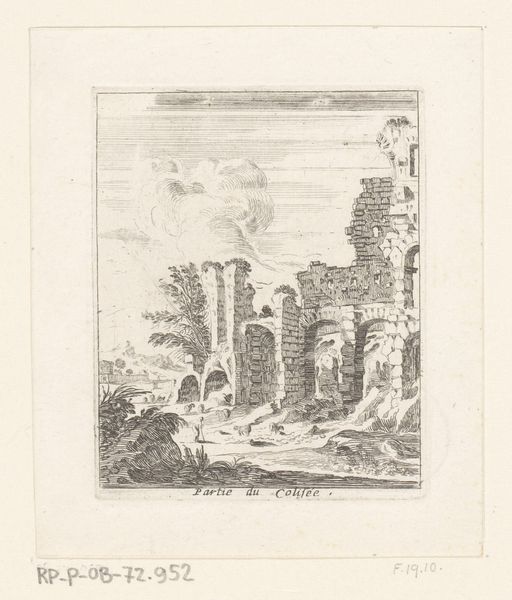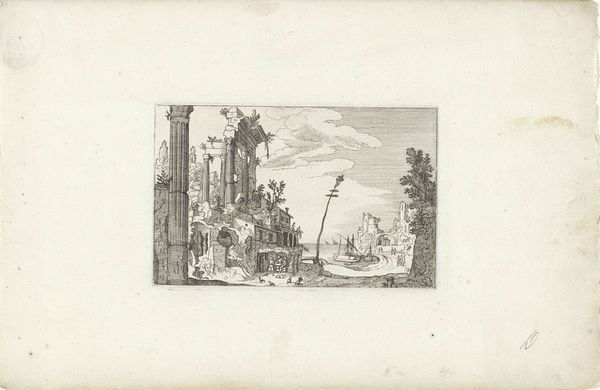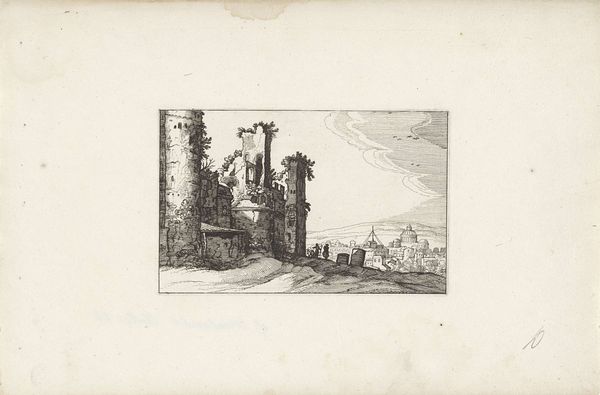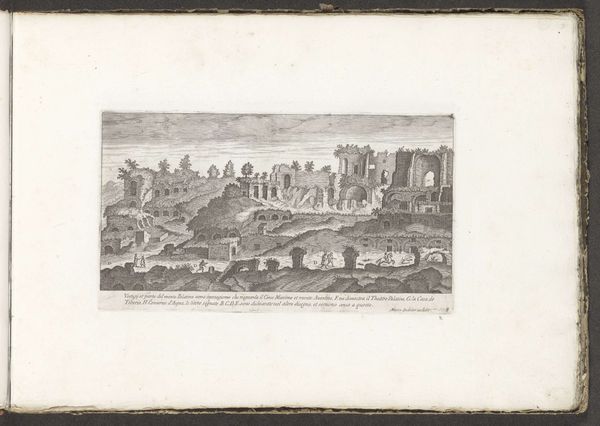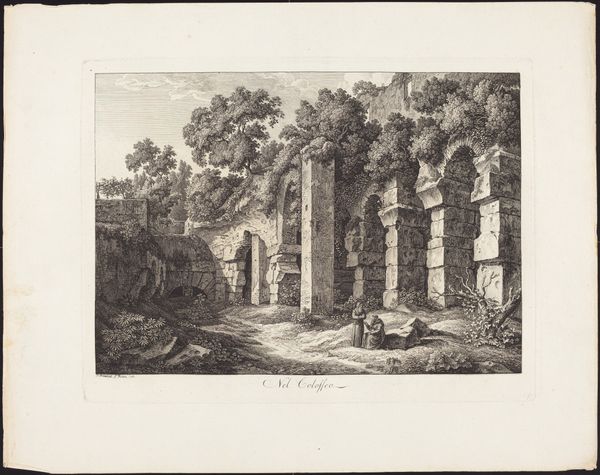
engraving, architecture
#
dutch-golden-age
#
old engraving style
#
landscape
#
engraving
#
architecture
#
realism
Dimensions: height 98 mm, width 154 mm
Copyright: Rijks Museum: Open Domain
Editor: So, this is "Heuvellandschap met een fontein en herders" – or "Hill landscape with a fountain and shepherds" – by Claes Jansz. Visscher, created in 1618. It’s an engraving. It's quite detailed for such a small scene, and the contrast between the ruined architecture and the everyday life of the herders is striking. What do you make of this scene, considering its historical context? Curator: This print reflects a common interest in the Dutch Golden Age: the intersection of classical ruins with contemporary life. Notice how Visscher positions the grandeur of past empires – symbolized by the crumbling architecture – alongside the simple, pastoral existence of the shepherds. What purpose do you think this juxtaposition served for viewers in the 17th century? Editor: Perhaps to remind them of the transience of empires and the enduring quality of simple life? Or to comment on the Dutch Republic’s own emerging power in contrast to the fallen empires of the past? Curator: Exactly. Prints like these circulated widely, shaping perceptions of history and national identity. The deliberate inclusion of recognizable architectural elements, likely Roman ruins, was meant to evoke a sense of shared European history, even as the Dutch were forging their own distinct path. This speaks volumes about how art became a tool for constructing cultural narratives and reinforcing national pride. Do you agree with that statement? Editor: Definitely. It's fascinating to think about how prints like these contributed to a collective understanding of history and shaped contemporary political views. I hadn’t considered the role of printmaking in shaping national identity. Curator: Considering how easily reproducible they are, it’s a potent method for broad cultural narratives. I find the small details compelling; the figures are arranged like a classical frieze. Something that I found extremely valuable looking into this work, beyond its beautiful strokes, is to recognize how actively art shapes political perspective. Editor: I'll definitely keep that in mind next time I'm analysing a work of art. Thanks for sharing that insight!
Comments
No comments
Be the first to comment and join the conversation on the ultimate creative platform.
